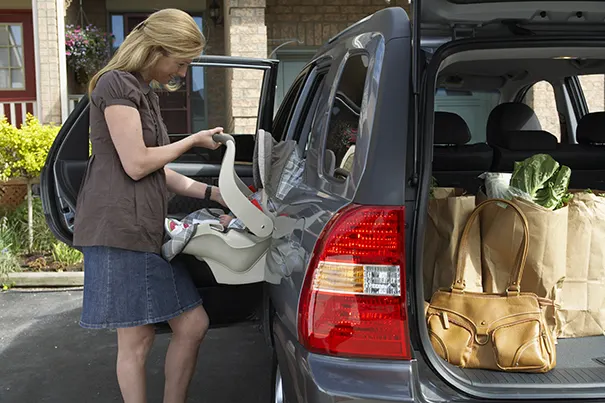Car Seat Safety for Your Little One
While it is likely your child has been travelling in your car since you left the hospital, as soon as your little one starts to ‘explore' more, usually at about 3 months, it is time to make sure you have babyproofed your car. If you've already babyproofed your home, then these safety tips will help make your car is safe for your baby as well.
How to Babyproof Your Car
Ensure the doors are ‘child locked' so they can't be opened from the inside. The switch is usually underneath the locking mechanism on the door (hidden when the door is closed).
Use the automatic door and window locks to keep your child safely inside and to ensure she can't throw things out the window. In older cars, use the manual locks.
If you're using the automatic windows, always watch to make sure her little fingers don't get caught.
Be sure that your baby isn't in direct sunlight. For example, use a window shade.
Never leave your baby alone in the car - not even for a minute. A useful trick is to leave your own car door open until you've taken your baby out.
Of course it is highly unlikely that you would ever forget your baby in the car, but it has happened. One way to help you remember is to leave your handbag in the backseat or to place a mirror so you can see your baby from the front.
When to Switch the Baby Car Seat
Once your baby has reached the maximum height or weight limit for her infant seat (usually between 9 and 18 months), then it is time to look for a new car seat.
Remember, it is recommended a rear facing seat is used for as long as possible, at least the first two years.
Always choose a baby car seat that's officially approved and is appropriate for your baby's age, weight and size. Head to a reputable shop where they can advise you.
As your baby grows you will need to purchase different car seats to ensure her safety as she meets the seat's weight and height restrictions. Here is a helpful guide based on the current UK Regulations:
| Child’s weight | Group | Seats |
|---|---|---|
| 0kg to 10kg | 0 | Lie-flat or ‘lateral’ baby carrier, rear-facing baby carrier, or rear-facing baby seat using a harness |
| 0kg to 13kg | 0+ | Rear-facing baby carrier or rear-facing baby seat using a harness |
| 9kg to 18kg | 1 | Rear- or forward-facing baby seat using a harness or safety shield |
| 15kg to 25kg | 2 | Rear- or forward-facing child car seat (high-backed booster seat or booster cushion) using a seat belt, harness or safety shield |
| 22kg to 36kg | 3 | Rear- or forward-facing child car seat (high-backed booster seat or booster cushion) using a seat belt, harness or safety shield |
How to Install a Baby Car Seat?
The car's owner's manual and the baby seat's instructions will have specific advice on how to safely install the baby car seat. If the instructions seem hard to follow you can usually find helpful tutorial videos online.
Double-check that the seat is properly installed, and that the seat belt is properly fastened and easily accessible. If you aren't sure, contact your local council's road safety department who may be able to assist.
If you're heading out with your baby in the car, you might be needing to change her nappy on the go. Easy-on nappy pants are the fastest way to change a mobile baby. So now your car is safe, your baby is changed and happy, go out and enjoy the day! For more tips and info on babyproofing your home, why not check out our baby proofing hub?
Join Pampers Club and get:




